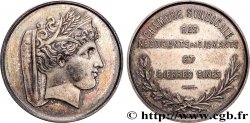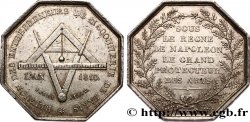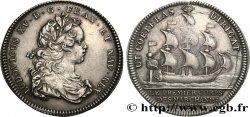fjt_699893 - CORPORATIONS LOUIS XVI - Corroyeurs, émission de 1777 1755
75.00 €
Количество
Добавить в корзину

Тип LOUIS XVI - Corroyeurs, émission de 1777
Дата: 1755
Металл: copper
Диаметр: 28,5 mm
Ориентация осей монеты: 6 h.
Вес: 7,78 g.
Век: cannelée
Ссылки в каталоге: :
Лицевая сторона
Аверс: легенда: LUDOV. XVI. - REX CHRISTIANIS.
Аверс: описание: Buste à gauche de Louis XVI, non signé, type Guéant Prieur 744B.
Аверс: перевод: Louis XVI, roi très chrétien.
Обратная сторона
Реверс: легенда: MES CORROYEURS PORTEURS DE LA CHASSE DE ST MERRY ; À L'EXERGUE : 1755.
Реверс: Описание: Quatre bourgeois portant la châsse de St Merry, à l'exergue : instruments de corroyage.
Комментарий
Les cuirs tannés forment deux grandes catégories : celle des cuirs forts et celle des cuirs à œuvre ou molleterie. Les premiers destinés à la fabrication des objets qui demandent une certaine rigidité, tels, par exemple, que les semelles des chaussures ; les seconds servant, au contraire à la confection des empeignes de souliers, des tiges de bottes et, en général, de tous les ouvrages de cordonnerie, de sellerie, de bourrellerie, etc.. qui réclament une grande souplesse. Les cuirs forts sont employés aussitôt après le tannage, tandis que les cuirs à œuvre doivent être soumis, avant d'être livrés au commerce, à des manipulations plus ou moins compliquées, ayant pour objet de les approprier aux usages spéciaux qu'on veut en faire. C'est l'exécution de ces manipulations qui constitue l'art du corroyeur.
Tanned leathers fall into two broad categories: strong leathers and working or soft leathers. The former are intended for the manufacture of objects requiring a certain rigidity, such as, for example, shoe soles; the latter are used, on the contrary, for the manufacture of shoe uppers, boot uppers and, in general, all shoemaking, saddlery, harness making, etc., which require great flexibility. Strong leathers are used immediately after tanning, while working leathers must be subjected, before being delivered to the market, to more or less complicated manipulations, the purpose of which is to adapt them to the special uses to which they are to be put. It is the execution of these manipulations which constitutes the art of the tanner
Tanned leathers fall into two broad categories: strong leathers and working or soft leathers. The former are intended for the manufacture of objects requiring a certain rigidity, such as, for example, shoe soles; the latter are used, on the contrary, for the manufacture of shoe uppers, boot uppers and, in general, all shoemaking, saddlery, harness making, etc., which require great flexibility. Strong leathers are used immediately after tanning, while working leathers must be subjected, before being delivered to the market, to more or less complicated manipulations, the purpose of which is to adapt them to the special uses to which they are to be put. It is the execution of these manipulations which constitutes the art of the tanner








 Cообщить об ошибке
Cообщить об ошибке Распечатать страницу
Распечатать страницу Отправить мой выбор
Отправить мой выбор Задать вопрос
Задать вопрос Consign / sell
Consign / sell
 Информация
Информация










